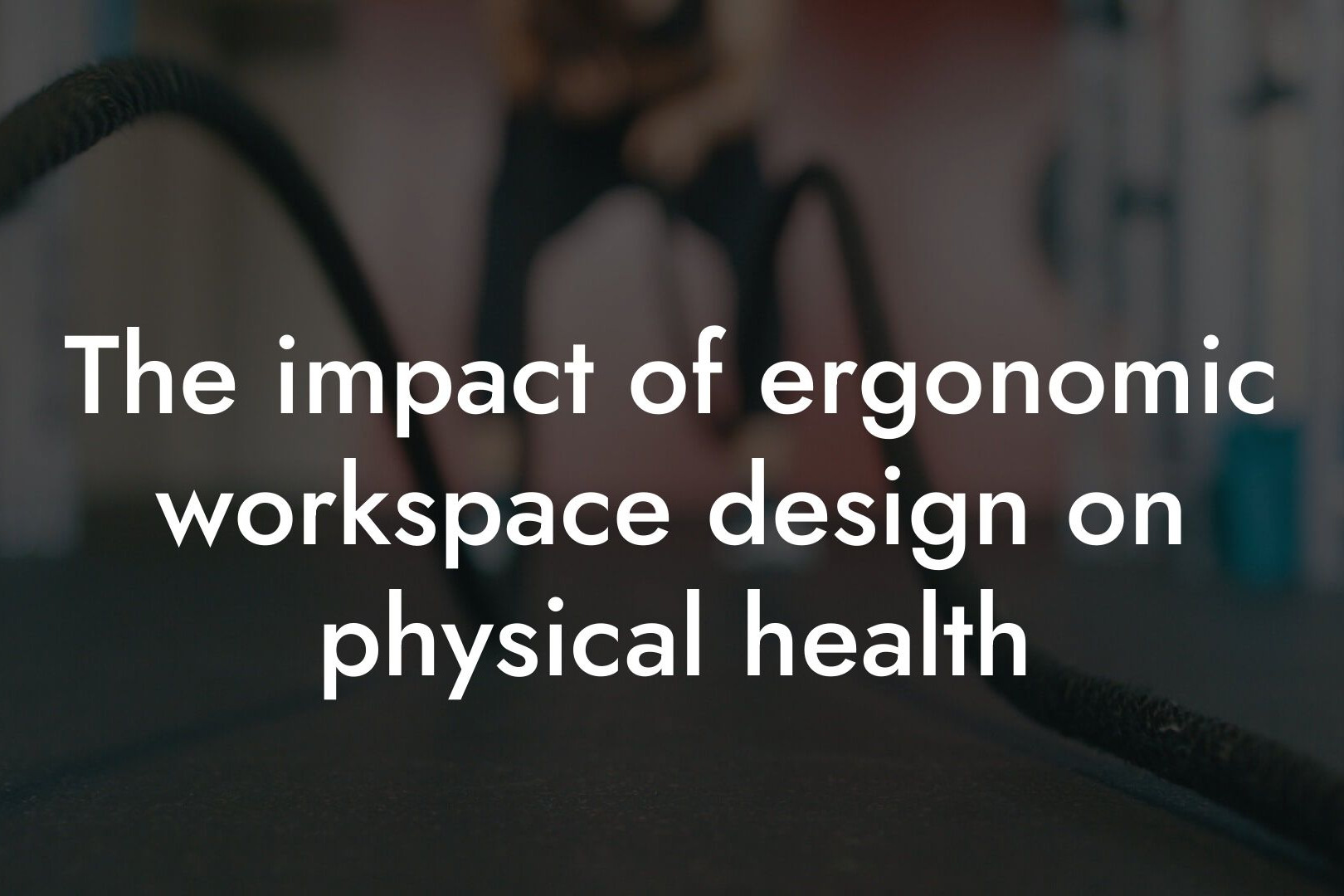As high-earning professionals, you understand the importance of peak physical and mental performance. You're likely no stranger to the concept of body composition, but have you ever stopped to consider how it affects your creative output? The relationship between body composition and creativity is more intertwined than you might think. In this article, we'll delve into the fascinating connection between the two and explore how optimizing your body composition can unlock your full creative potential.
Table of Contents
- What is Body Composition?
- The Impact of Body Composition on Cognitive Function
- The Role of Hormones in Creativity
- The Connection Between Body Fat and Inflammation
- The Impact of Body Composition on Mood and Motivation
- The Benefits of DEXA Scanning for Body Composition Analysis
- Practical Tips for Optimizing Body Composition and Creative Output
- Frequently Asked Questions
What is Body Composition?
Body composition refers to the proportion of fat and lean mass in your body. It's a critical aspect of overall health and fitness, as it can impact everything from energy levels and metabolism to cognitive function and mood. When we talk about body composition, we're referring to the ratio of fat mass (FM) to lean mass (LM), which includes muscle, bone, and water. A healthy body composition is characterized by a balance between these two components, with an optimal range varying depending on age, gender, and other factors.
The Impact of Body Composition on Cognitive Function
Research has shown that body composition has a significant impact on cognitive function, including creativity. Studies have found that individuals with a higher percentage of body fat tend to experience decreased cognitive performance, including reduced attention, memory, and processing speed. On the other hand, those with a higher lean mass percentage tend to exhibit improved cognitive function, including enhanced creativity, problem-solving skills, and mental flexibility.
This is because lean mass, particularly muscle, plays a critical role in regulating inflammation, insulin sensitivity, and hormone production – all of which are essential for optimal brain function. When we have a healthy balance of lean mass and fat mass, our brains are better equipped to handle the demands of creative thinking, problem-solving, and innovation.
The Role of Hormones in Creativity
Hormones play a vital role in regulating our creative potential. Two key hormones, testosterone and dopamine, are closely tied to body composition and have a significant impact on creativity. Testosterone, often referred to as the "male hormone," is essential for muscle growth and development. It also plays a critical role in regulating creativity, confidence, and motivation. Dopamine, on the other hand, is responsible for reward processing, pleasure, and motivation – all essential components of the creative process.
When we have a healthy body composition, our hormone levels are better balanced, leading to improved cognitive function, increased motivation, and enhanced creativity. Conversely, an imbalance of hormones can lead to decreased creativity, fatigue, and a lack of motivation.
The Connection Between Body Fat and Inflammation
Body fat, particularly visceral fat, is a major contributor to chronic inflammation. When we carry excess body fat, our bodies produce pro-inflammatory cytokines, which can lead to a range of negative effects on cognitive function, including decreased creativity. Chronic inflammation has been linked to a range of cognitive disorders, including depression, anxiety, and Alzheimer's disease.
On the other hand, a healthy body composition, characterized by a low percentage of body fat, is associated with reduced inflammation and improved cognitive function. When we maintain a healthy balance of lean mass and fat mass, our bodies are better equipped to regulate inflammation, leading to improved creativity, focus, and mental clarity.
The Impact of Body Composition on Mood and Motivation
Body composition has a profound impact on our mood and motivation levels. When we have a healthy body composition, we tend to experience improved mood, increased energy, and enhanced motivation. This is because a healthy balance of lean mass and fat mass regulates our hormone levels, including serotonin, dopamine, and endorphins – all essential for mood regulation and motivation.
Conversely, an unhealthy body composition, characterized by excess body fat or inadequate lean mass, can lead to decreased mood, fatigue, and a lack of motivation. This can have a devastating impact on our creative output, as we struggle to find the energy and inspiration to tackle complex tasks and projects.
The Benefits of DEXA Scanning for Body Composition Analysis
So, how can you optimize your body composition to unlock your full creative potential? One of the most effective ways is through DEXA (Dual-Energy X-ray Absorptiometry) scanning. DEXA scanning provides a comprehensive analysis of your body composition, including fat mass, lean mass, bone density, and more.
By using DEXA scanning, you can gain a detailed understanding of your body composition and identify areas for improvement. This information can be used to develop a personalized fitness and nutrition plan, tailored to your specific needs and goals. With regular DEXA scanning, you can track your progress, make data-driven decisions, and optimize your body composition for peak creative performance.
Practical Tips for Optimizing Body Composition and Creative Output
So, what can you do to optimize your body composition and unlock your full creative potential? Here are some practical tips to get you started:
- Focus on whole, nutrient-dense foods, including lean proteins, complex carbohydrates, and healthy fats.
- Incorporate regular exercise, including strength training and high-intensity interval training (HIIT), to build lean mass and improve body composition.
- Prioritize sleep and stress management, as both are critical for hormone regulation and cognitive function.
- Stay hydrated by drinking plenty of water throughout the day.
- Consider incorporating supplements, such as omega-3 fatty acids and vitamin D, to support cognitive function and body composition.
- Make time for creative pursuits and activities that bring you joy and fulfillment.
- Prioritize self-care and take regular breaks to rest and recharge.
By incorporating these tips into your daily routine, you can optimize your body composition, unlock your full creative potential, and take your business to the next level.
In conclusion, the connection between body composition and creative output is a complex and multifaceted one. By understanding the impact of body composition on cognitive function, hormone regulation, and mood, you can take steps to optimize your body composition and unlock your full creative potential. Remember, a healthy body composition is essential for peak performance, and with the right tools and strategies, you can achieve your goals and take your business to new heights.
Frequently Asked Questions
What is the connection between body composition and creative output?
Research has shown that there is a significant link between body composition and creative output. A healthy body composition, characterized by a balance of lean mass and body fat, can improve cognitive function, boost energy levels, and enhance overall well-being, all of which are essential for creative thinking and problem-solving.
How does body fat percentage affect creative output?
Excess body fat has been linked to decreased cognitive function, including reduced creativity and productivity. High body fat percentage can lead to inflammation, oxidative stress, and insulin resistance, which can impair brain function and hinder creative thinking.
What is the ideal body fat percentage for optimal creative output?
The ideal body fat percentage for optimal creative output varies depending on age, sex, and other factors. Generally, a body fat percentage between 10-15% for men and 15-20% for women is considered optimal for overall health and cognitive function.
How does lean mass affect creative output?
Lean mass, including muscle mass, plays a crucial role in creative output. Increased lean mass has been linked to improved cognitive function, including enhanced creativity, problem-solving, and memory. This is because muscle mass is involved in the production of neurotransmitters and hormones that regulate brain function.
What is the role of bone density in creative output?
Bone density is often overlooked as a factor in creative output, but it plays a significant role. Osteoporosis, or low bone density, has been linked to decreased cognitive function, including reduced creativity and productivity. This is because bone health is closely tied to overall health and well-being.
How does physical activity affect creative output?
Regular physical activity has been shown to improve creative output by increasing blood flow to the brain, boosting neurotransmitters, and enhancing cognitive function. Exercise has also been linked to increased creativity, improved problem-solving, and enhanced memory.
What types of physical activity are most beneficial for creative output?
Aerobic exercise, such as running or cycling, is particularly beneficial for creative output, as it increases blood flow to the brain and boosts oxygenation. Resistance training, such as weightlifting, is also beneficial, as it increases muscle mass and bone density.
How does nutrition affect creative output?
Nutrition plays a critical role in creative output. A diet rich in whole foods, fruits, vegetables, and omega-3 fatty acids can improve cognitive function, boost energy levels, and enhance overall well-being, all of which are essential for creative thinking and problem-solving.
What nutrients are most beneficial for creative output?
Omega-3 fatty acids, particularly EPA and DHA, are essential for brain function and have been linked to improved cognitive function and creativity. Vitamin D, magnesium, and B vitamins are also important for brain health and creative output.
How does sleep affect creative output?
Sleep is essential for creative output, as it allows the brain to consolidate memories, process information, and recharge. Lack of sleep can impair cognitive function, reduce creativity, and decrease productivity.
What is the ideal amount of sleep for optimal creative output?
The ideal amount of sleep varies from person to person, but most adults need 7-9 hours of sleep per night for optimal cognitive function and creative output.
How does stress affect creative output?
Chronic stress can impair cognitive function, reduce creativity, and decrease productivity. This is because stress can lead to inflammation, oxidative stress, and decreased blood flow to the brain.
What are some strategies for managing stress and improving creative output?
Strategies for managing stress and improving creative output include meditation, yoga, deep breathing exercises, and engaging in relaxing activities, such as reading or listening to music.
How does body composition affect mental health?
Body composition can have a significant impact on mental health. Excess body fat has been linked to increased risk of depression and anxiety, while a healthy body composition can improve mood, reduce stress, and enhance overall well-being.
What is the connection between body composition and self-esteem?
Body composition can have a significant impact on self-esteem. A healthy body composition can improve body image, boost confidence, and enhance overall self-esteem, while excess body fat can lead to negative body image and decreased self-esteem.
How can I improve my body composition for optimal creative output?
Improving body composition for optimal creative output involves a combination of regular physical activity, a balanced diet, and stress management. Focus on building lean mass, reducing body fat percentage, and improving overall health and well-being.
What are some tips for maintaining a healthy body composition?
Tips for maintaining a healthy body composition include eating a balanced diet, staying hydrated, getting regular exercise, and getting enough sleep. It's also important to manage stress and engage in activities that bring joy and fulfillment.
How can I track my body composition?
There are several ways to track body composition, including measuring body fat percentage, tracking lean mass, and monitoring bone density. You can also track progress through measurements, weight, and body fat percentage.
What are some common mistakes people make when trying to improve their body composition?
Common mistakes people make when trying to improve their body composition include crash dieting, overexercising, and neglecting overall health and well-being. It's important to focus on sustainable lifestyle changes rather than quick fixes.
How long does it take to see improvements in creative output after improving body composition?
The time it takes to see improvements in creative output after improving body composition varies from person to person. However, most people can expect to see improvements within 6-12 weeks of making sustainable lifestyle changes.
What role does mindset play in the connection between body composition and creative output?
Mindset plays a critical role in the connection between body composition and creative output. A positive mindset, characterized by self-awareness, self-acceptance, and self-compassion, can improve body image, boost confidence, and enhance overall creative output.
How can I overcome self-doubt and improve my creative output?
Overcoming self-doubt and improving creative output involves building self-awareness, practicing self-compassion, and reframing negative thoughts. It's also important to focus on progress, not perfection, and to celebrate small wins along the way.
What are some resources available for improving body composition and creative output?
Resources available for improving body composition and creative output include working with a personal trainer or nutritionist, seeking out online resources and tutorials, and joining a community of like-minded individuals.
How can I stay motivated and committed to improving my body composition and creative output?
Staying motivated and committed to improving body composition and creative output involves setting realistic goals, tracking progress, and celebrating small wins. It's also important to find accountability and support from friends, family, or a community of like-minded individuals.
Here are some related articles you might love...
- The importance of physical fitness in architectural presentations
- The impact of ergonomic workspace design on physical health
- Balancing client demands with personal health in design professions
- How to avoid burnout through physical activity in architecture
- How DEXA scans can benefit architects and designers
- Fitness strategies for balancing design work and physical health
- Nutrition for maintaining creativity and energy in design work
- How architects can stay fit during long design sessions
- How to stay active during the design and build phases
Zak Faulkner
Zak Faulkner is a leading authority in the realm of physical health and body composition analysis, with over 15 years of experience helping professionals optimise their fitness and well-being. As one the experts behind Tano Performance Group, Zak has dedicated his career to providing in-depth, science-backed insights that empower clients to elevate their physical performance and overall health.
With extensive knowledge of DEXA technology, Zak specializes in delivering comprehensive body assessments that offer precise data on body fat, muscle mass, bone density, and overall physique. His expertise enables individuals to make informed decisions and achieve their fitness goals with accuracy and confidence. Zak’s approach is rooted in a deep understanding of human physiology, combined with a passion for helping clients unlock their full potential through personalised strategies.
Over the years, Zak has earned a reputation for his commitment to excellence, precision, and client-focused service. His guidance is trusted by top professionals who demand the best when it comes to their health. Whether advising on fitness programs, nutritional strategies, or long-term wellness plans, Zak Faulkner’s insights are a valuable resource for anyone serious about taking their health and fitness to the next level.
At Tano Performance Group, Zak continues to lead our Content Team revolutionising how professionals approach their physical health, offering unparalleled expertise that drives real results.




